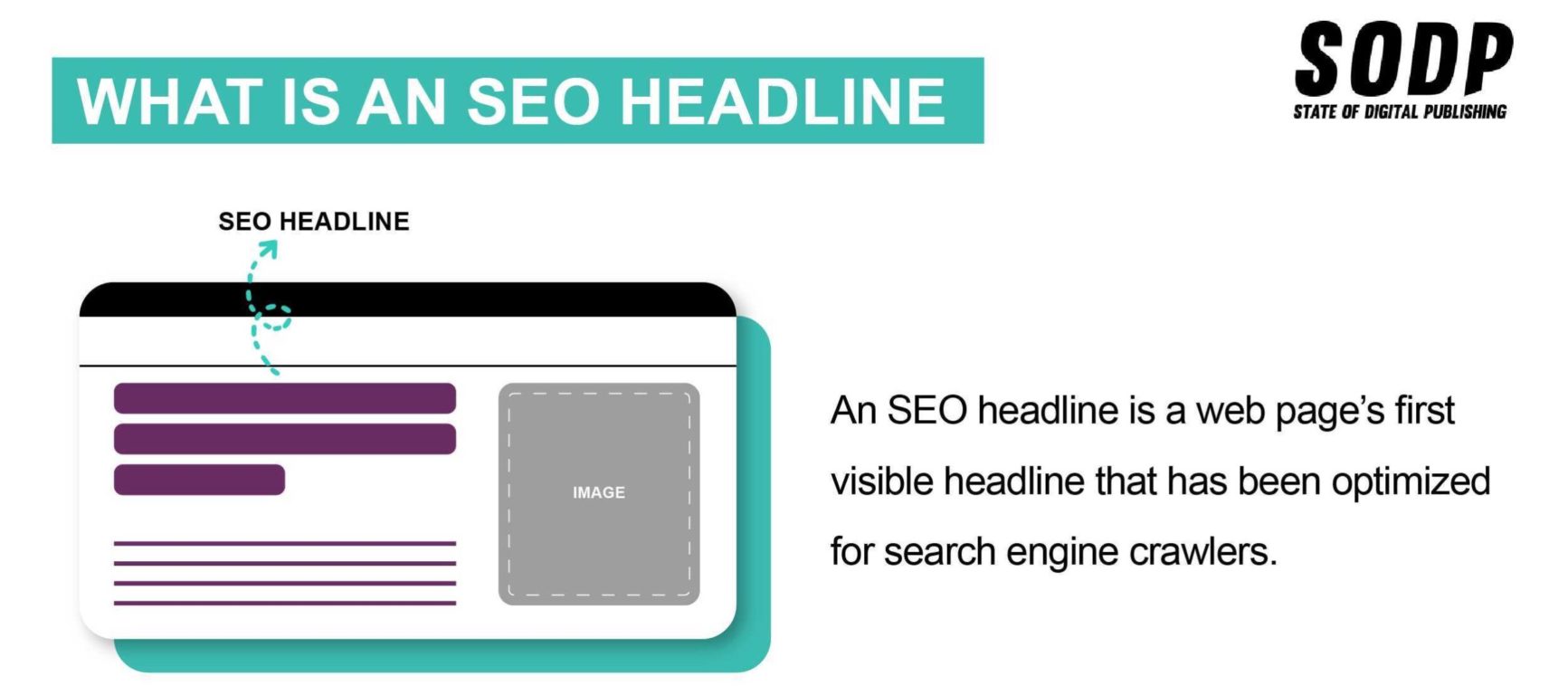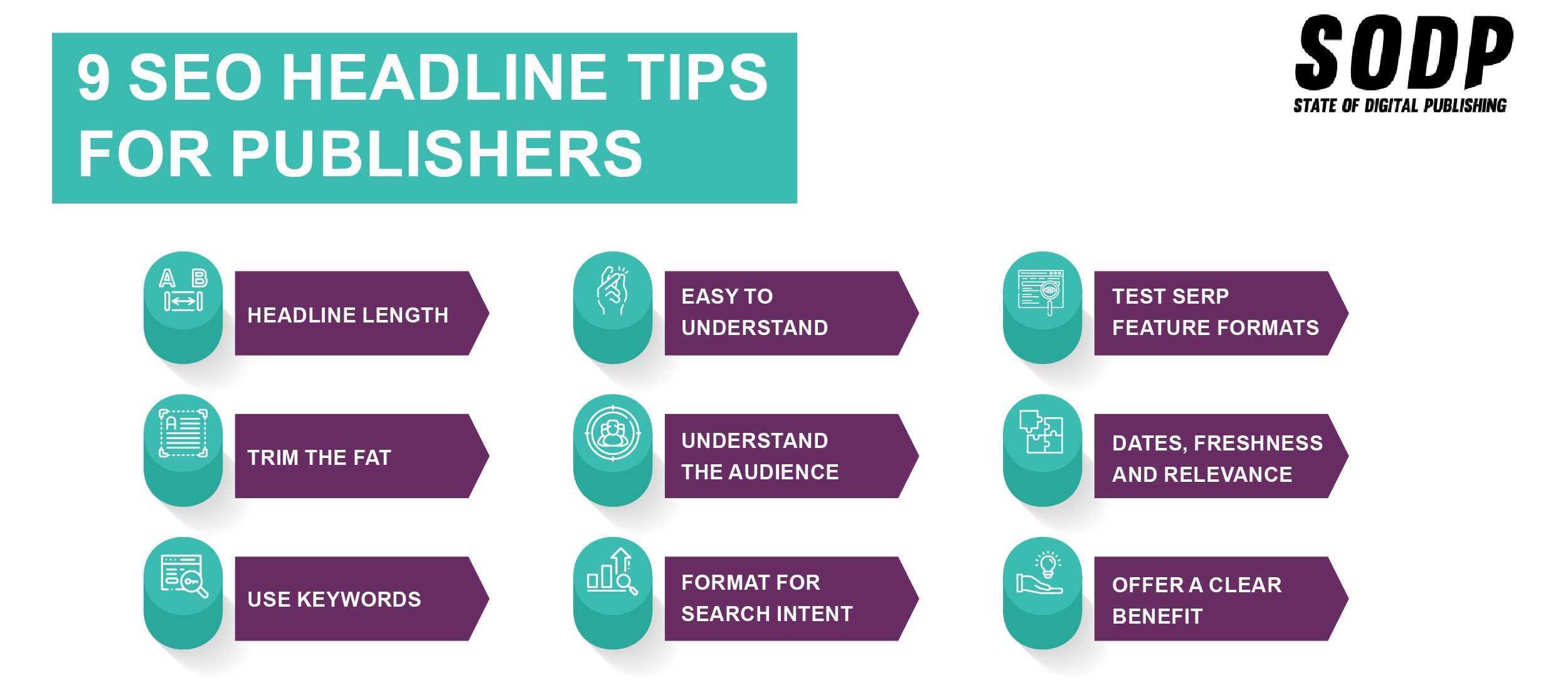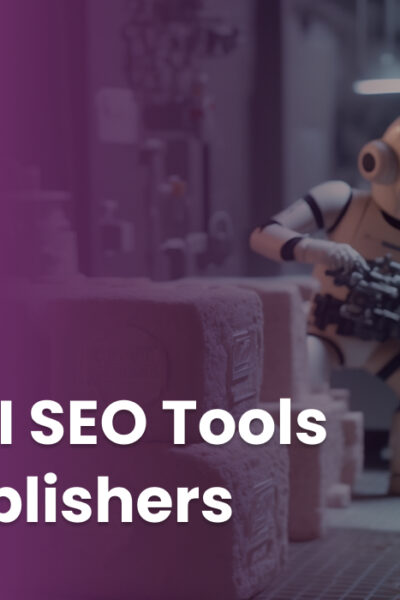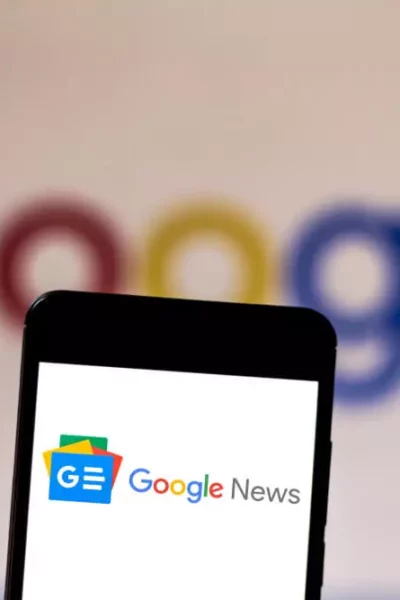Editors have long known the value of a great headline. A title not only tells the reader what an article is about, it can also communicate tone, voice and point of view.
Creating the perfect headline can be a labor of love, with the level of success often deciding how many people read the article. This fact has changed little since readers embraced digital news services and is, if anything, even more relevant now.
The rules that governed how to attract readers during the print era — writing descriptive, concise headlines that were also engaging — still hold true in the digital age. Now, however, they also determine how well an article ranks on a search engine results page (SERP).
There’s a popular misconception that using search engine optimization (SEO) to write a headline means writing for robots. This couldn’t be further from the truth, given that Google itself warns that page headlines that undermine the user experience (PDF download) will receive a lower quality rating.
The evolution of search engine algorithms means that using old-school principles to write compelling headlines for humans will cover most of what’s needed to write SEO headlines. To bridge that final gap requires understanding how search engines interpret content and the signal they look for.
Read on to find out more.
What Is an SEO Headline?

An SEO headline is a web page’s first visible headline that has been optimized for search engine crawlers.
Human readers and search crawlers both use visual clues — such as the use of larger font size — to determine when specific text is a headline. However, search engines also need the text to be included in the page’s h1 tag — a top-level header HTML tag.
Writing appealing headlines is one of the most important steps in any on-page strategy. They need to be concise and clear enough to inform search engines about the article’s focus, while also being interesting enough to draw in human readers. Using a headline analyzer tool can help evaluate and improve the effectiveness of SEO headlines by assessing word choice, length, and emotional impact.
Before exploring how to write compelling headlines, let’s clarify two concepts that are often confused: the H1 and the meta title.
What Is an SEO Title?
SEO titles that are meta titles, which are contained in the HTML <title> tag and are invisible to readers, that have been optimized for search engine crawlers.
Meta titles tell crawlers what the publisher would like to appear as the article’s title link in the SERP.

While the headline and title are different HTML elements, publishers should try to include the same text in each.
This is because search engines use a variety of page signals, including the H1, to determine whether a meta title accurately depicts page content. Writing text that fits both is also recommended by Google News
Google, for example, has said its search engine will in rare cases change a SERP title link if the algorithm decides there’s a more suitable alternative.
Why Are SEO Headlines Important?
An SEO headline balances search engine needs with potential audience interest. A well-written headline that includes a target keyword can help a page appear higher on a SERP.
Editors can spend hours writing their perfect headline, one that is both concise and intriguing. But if they don’t follow some basic SEO rules, the signals their story sends to search engines might not be strong enough to match user search intent.
Appearing nearing the top of the first SERP is a huge achievement, but a high number of impressions is only half the battle. Search engine users must still want to read the story itself.
A clear and relevant headline helps improve the audience’s understanding of an article’s relevance, which can help secure a higher click-through rate (CTR).
Other On-Page SEO Elements to Consider
Other relevant elements of on-page SEO optimization are subheadings. There are various subheadings that can be used when creating web content — including H2s, H3s, H4s.
Keywords are a key component of any content marketing strategy and, ideally, they should be placed at the beginning of a headline, title or subheading. Keyword stuffing, however, should be avoided at all costs at risk of being penalized by the algorithm.
Yet another reason to write efficient and compelling headlines.
Are SEO Headlines Important for Search Engine Rankings?
Optimized headlines can significantly improve a page’s search engine ranking by providing better signals to search engines about the page’s content. Search engines that can more quickly understand a page’s content are better placed to match it with user search intent.
While keyword-rich titles were once enough to secure a top spot in the SERPs, this system could be openly gamed by SEOs and webmasters. This saw Google launch the Panda algorithm update in 2011 as a way to tackle keyword stuffing in general.
The update, which was permanently incorporated into Google’s core algorithm in 2016, assigns a quality score to web pages. This score is used as a ranking factor and is designed to reward high-quality sites. Keyword stuffing negatively affects this score.
Tips for Writing News Headlines

When it comes to headline writing formulas, things are rather straightforward. There are a few best practices to follow when creating SEO headlines. Some apply to all types of content, while others are more specific.
Appearing in Google’s Top Stories carousel is a dream for any publisher, but doing so without first understanding some basic is an uphill battle.
Here are six elements you should pay attention to when writing headlines for news pieces.
1. Headline Length
Headlines should have a character count of no more than 70 characters. This length will provide enough context about the article without being truncated in the SERPs.
Google will cut off a headline based on the pixel width (at 600 pixels), which is why it’s a good idea to embrace the “short and sweet” mantra when it comes to headline writing.
2. Trim the Fat
Having an upper character limit isn’t an invitation to hit that ceiling. Less is more when it comes to headline word count. Improving readability means aim for headlines with around eight words, which is generally more than enough to be informative, engaging and punchy.
3. Use Keywords
Keywords are still an important factor in telling search engines whether content matches a user’s search intent.
Use the primary keyword at the beginning of a headline to make sure the topic is stated clearly and up front. Don’t be tempted to overuse keywords, not only does Google dislike keyword stuffing but readers also find it off-putting.
4. Easy to Understand
A headline’s main purpose is to catch the reader’s attention and entice them to read the full article. As such, it should be clear and easy to follow. If readers struggle to understand what’s being said in the headline, chances are they’re likely to avoid the article itself.
5. Understand the Audience
It’s important to be able to connect with the target audience. Create titles that evoke feelings, but maintain brand consistency at all times. Power words and puns can make the content more engaging, though they can also be a source of controversy if not handled carefully.
6. Dates, Freshness and Relevance
Google has advised against including a date or time in article headlines as a best practice. Doing so will not help boost an article’s freshness metric.
Including the date within the Article structured data is enough to help Google understand an article’s freshness.
However, including general timeframes within a headline when they are relevant to the story can help boost its performance. For example, the headline of an article covering the release of new Netflix content in a given month should include that month, as this is information that helps search engines better match user search intent.
Tips for Writing Evergreen Headlines
Evergreen content stays relevant for much longer than news and can help publishers stay in the search results for longer than content driven by current events.
Not only can it appear in Google Search results, but it can help build topical a website’s authority in a particular niche, helping the publisher’s news articles compete for Top Stories
While the tips from the news section carry over, there are some strategies unique to evergreen headlines.
7. Test SERP Feature Formats
Google has a number of universal SERP features — such as featured snippets and People Also Ask boxes — that can help boost visibility. Being eligible for one of these features requires understanding what Google is looking for in the first place.
Content from our partners
For example, one type of featured snippet provides concept definitions. Therefore, to have a better chance of appearing in this feature, optimize headlines or subheadings to include questions with the following sentence containing the answer.
However, any optimization strategy should be guided by the data generated from headlines and subheads and their subsequent SERP feature performance.
Test subheading effectiveness in terms of visibility and engagement and monitor the results over time.
It is important to remember that five years ago discussion in the SEO community focused on featured snippets’ effectiveness (or lack thereof) to bolster CTRs, while the current conversation has moved on to PAA boxes
When writing headlines that target different features it’s important to consider both the specific niche as well as any data a publisher has already collected from similar exercises.
8. Format for Search Intent
Google ranks pages according to user search intent, so people searching for the “best running shoes” are more likely to be offered listicle style articles.
With that in mind, try formatting headlines to match search intent. For example, use numbering, questions, explanations and comparisons to answer user queries then use Google Search Console to validate the performance.
9. Offer a Clear Benefit
When readers decide whether to read an article, they usually wonder if that article is worth their time. Readers want to understand early on if the article will benefit them.
A headline should indicate the value that a reader can expect from reading it. Compelling content serves to inform, entertain, engage, empower or inspire a reader.
Headlines for Humans
Headlines are an essential element of digital content. They should provide a clear and concise overview of a page’s content.
When it comes to writing SEO headlines, the most important thing is to write for a human reader first with a view to optimizing for search engines second.
Google cares about matching user intent and has invested heavily on this front over the years. It understands that its users don’t want to see spammy, clickbait titles and is inclined to penalize sites that use such tactics.
Focusing on a human first approach means writing accurate, interesting headlines aligning with the publisher’s brand. A compelling headline is unlikely to suffer even in the face of future search engine algorithm changes.












